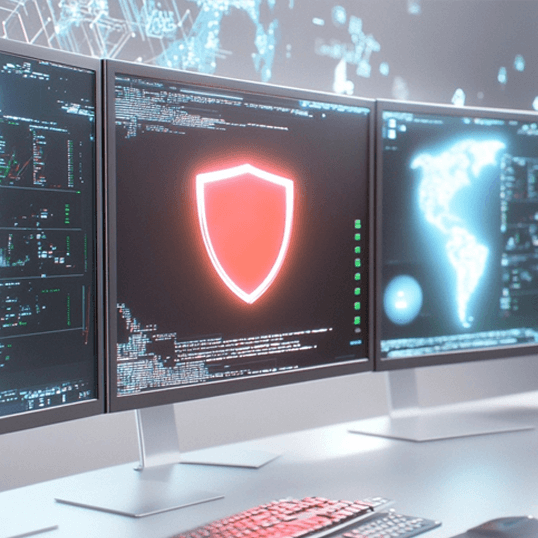In today’s ever-evolving digital landscape, traditional cybersecurity approaches are no longer sufficient to protect organizations from the growing number and sophistication of cyber threats. The need for a dynamic and proactive defense strategy is greater than ever. This is where Continuous Threat Exposure Management (CTEM) comes into play.
Threat exposure management, a concept that lies at the heart of CTEM, focuses on identifying, assessing, and mitigating potential threats before they can be exploited. Unlike reactive security strategies that address threats after a breach occurs, CTEM empowers organizations to continuously evaluate their security posture and reduce vulnerabilities in real-time.
This article explores how CTEM works, why it’s critical for modern businesses, and how to implement it effectively for a proactive defense.
What is Continuous Threat Exposure Management (CTEM)?
Continuous Threat Exposure Management is a cybersecurity strategy designed to continuously monitor, assess, prioritize, and remediate vulnerabilities and exposures across an organization’s entire attack surface. It provides a clear, real-time understanding of where potential threats exist, how they can be exploited, and how organizations can remediate them before any damage occurs.
Unlike one-time security assessments or scheduled vulnerability scans, CTEM operates as an ongoing cycle, adjusting to new threats as they emerge and evolving alongside the threat landscape. It encompasses the full spectrum of exposure — from internal infrastructure and cloud environments to third-party systems and user endpoints.
Why Traditional Security Measures Fall Short
Organizations traditionally depend on periodic penetration testing, compliance checklists, and static vulnerability assessments. While these are valuable tools, they don’t offer a continuous view of evolving threats.
Here are a few limitations of traditional models:
- Lack of real-time updates: Threat actors move quickly. If your system is only tested once a quarter, it could be vulnerable for weeks or months.
- Siloed threat analysis: Traditional tools often operate in isolation, failing to provide a holistic view of interconnected systems.
- Reactive stance: Waiting for a breach to happen before responding can result in financial loss, reputational damage, and regulatory consequences.
CTEM, by contrast, offers a real-time and proactive approach to securing digital assets.
The Core Pillars of CTEM
An effective Continuous Threat Exposure Management strategy is built on five key pillars:
Scoping
Scoping involves identifying all assets across the organization’s digital footprint — cloud environments, applications, networks, endpoints, and third-party integrations. You can’t secure what you don’t know exists, so accurate asset discovery is the first crucial step.
Discovery
This stage involves scanning the scoped environment to discover vulnerabilities, misconfigurations, and weak points that attackers could exploit. Discovery also includes identifying shadow IT and unauthorized devices connected to the network.
Prioritization
Not all threats carry the same weight. CTEM uses risk-based prioritization to focus resources on exposures that pose the greatest risk. It considers factors like exploitability, asset criticality, and threat intelligence.
Validation
CTEM often employs simulated attacks or red-teaming to validate whether an exposure is actually exploitable. This ensures that attention is given only to real, high-impact risks, reducing false positives.
Mobilization
Finally, the remediation phase ensures that prioritized, validated exposures are addressed through patching, configuration updates, or access control enhancements. This stage may also involve adjusting policies, updating tools, and training staff.
The Role of Continuous Threat Exposure Management in Cybersecurity
As cyberattacks become more advanced, organizations must shift from a reactive posture to a proactive cybersecurity mindset. The role of Continuous Threat Exposure Management in cybersecurity is vital because it bridges the gap between knowing a vulnerability exists and understanding how it can be used in the real world.
Rather than focusing solely on compliance or theoretical risks, CTEM highlights actual exploitable paths that adversaries might take. It enables security teams to be intentional in their actions, ensuring resources are used efficiently and effectively to protect critical systems.
Moreover, CTEM integrates with other cybersecurity frameworks such as MITRE ATT&CK, Zero Trust Architecture, and Security Operations Centers (SOC) to enhance organizational defenses and resilience.
To learn how your organization can assess and strengthen its threat readiness posture using CTEM,
Threat Exposure Management in Action: A Use Case
Imagine a financial services company with multiple digital banking platforms, remote employees, and third-party APIs. Every day, new code is deployed, users connect from various locations, and data flows between internal and external networks.
In a traditional setup, vulnerability scans might be run weekly or monthly. However, if a critical zero-day vulnerability is discovered in the web server framework they use, there’s a dangerous window of opportunity before it’s detected and patched.
With CTEM in place:
- The new threat is detected within hours via automated exposure discovery.
- The vulnerability is prioritized based on exploitability and the sensitivity of affected systems.
- Red-team simulations validate its risk by showing how an attacker could pivot from the exposed server to internal databases.
- Remediation teams receive clear, actionable instructions.
- The threat is neutralized before it is exploited.
This real-time and coordinated response minimizes risk and maximizes defense efficiency.
Benefits of Adopting CTEM
Implementing threat exposure management through CTEM offers several advantages:
Proactive Security Posture
By constantly monitoring and evaluating exposures, CTEM allows organizations to act before a threat manifests into a breach.
Real-Time Threat Visibility
Security teams gain ongoing insight into what assets are exposed, how they can be attacked, and what steps to take immediately.
Improved Decision-Making
With accurate threat prioritization and risk validation, leadership can allocate resources and budget based on real threats, not hypothetical scenarios.
Enhanced Incident Response
By simulating attack paths and validating exposures, CTEM prepares organizations to respond more quickly and effectively during actual incidents.
Regulatory Compliance
CTEM supports compliance efforts by ensuring that vulnerabilities are identified, documented, and remediated continuously, aligning with frameworks such as NIST, ISO 27001, and GDPR.
Challenges to Consider
While CTEM is powerful, it’s not without its challenges:
- Integration Complexity: Implementing CTEM requires integration with various security tools, cloud platforms, and IT infrastructure.
- Resource Demands: Continuous monitoring and analysis can place a strain on resources if not properly automated.
- Change Management: Shifting from a reactive to a proactive approach requires cultural change, executive buy-in, and staff training.
Organizations must address these issues with proper planning, investment in automation tools, and clear communication across departments.
How to Get Started with CTEM
Here’s a roadmap to adopting Continuous Threat Exposure Management:
Assess Your Current Security Posture
- Identify gaps in visibility, processes, and tool integration.
Define Your Scope and Objectives
- Determine which assets, networks, and business units to include initially.
Invest in the Right Tools
- Choose platforms that provide automated asset discovery, vulnerability management, threat simulation, and risk prioritization.
Create Cross-Functional Teams
- Include IT, cybersecurity, DevOps, and compliance stakeholders.
Establish Metrics and KPIs
- Track reductions in exposure time, time to remediation, and number of validated threats closed.
Iterate and Evolve
- CTEM is not a set-it-and-forget-it approach. Continuously refine based on threat intelligence and organizational changes.
Conclusion
As the threat landscape becomes more complex, threat exposure management through Continuous Threat Exposure Management (CTEM) provides the proactive strategy needed to safeguard today’s digital enterprises. By shifting from reactive fire-fighting to continuous assessment and remediation, CTEM enables organizations to stay ahead of attackers and minimize their exposure to risk.
The role of Continuous Threat Exposure Management in cybersecurity is not just about technology — it’s about visibility, validation, and velocity. When implemented effectively, CTEM transforms how organizations approach security, empowering them to build a resilient digital defense.
FAQs
What is Continuous Threat Exposure Management (CTEM)?
CTEM is a cybersecurity strategy that involves continuously identifying, prioritizing, validating, and remediating threats across an organization’s digital environment. It goes beyond traditional periodic scans by offering real-time visibility into risks and exposures, enabling proactive security measures.
How does threat exposure management differ from traditional vulnerability management?
While traditional vulnerability management identifies and lists potential weaknesses, threat exposure management focuses on how likely a vulnerability is to be exploited in the real world. It includes attack simulation, validation, and business context, helping organizations focus on the most critical risks.
Why is threat exposure management important for modern cybersecurity?
Modern cyber threats are dynamic and sophisticated. Threat exposure management allows organizations to move from a reactive to a proactive approach, reducing their risk of breaches by continuously monitoring and addressing vulnerabilities before attackers can exploit them.
What are the key components of a CTEM strategy?
A successful CTEM strategy includes:
- Scoping: Identifying all assets and attack surfaces.
- Discovery: Finding vulnerabilities and misconfigurations.
- Prioritization: Ranking threats based on risk and impact.
- Validation: Simulating attacks to confirm threat exploitability.
- Remediation: Taking corrective action to fix or mitigate the exposure.
How often should organizations perform threat exposure management assessments?
Unlike traditional methods, CTEM is continuous. It operates in real-time or near real-time, meaning assessments are ongoing. This ensures that new threats, software updates, or infrastructure changes are evaluated immediately to maintain security.
Can CTEM help organizations meet regulatory compliance requirements?
Yes, implementing threat exposure management helps align with cybersecurity frameworks like NIST, ISO 27001, GDPR, and HIPAA by ensuring continuous monitoring, documentation, and remediation of security risks — key components of compliance.
Who should be involved in a CTEM implementation process?
CTEM should involve a cross-functional team including:
- Cybersecurity teams for technical execution,
- IT operations for infrastructure insight,
- Risk and compliance officers for governance,
- Executive leadership to align CTEM with business goals.
What are the biggest challenges in adopting CTEM?
Some common challenges include:
- Integration with existing tools and systems,
- Managing large volumes of threat data,
- Organizational resistance to change,
- Lack of skilled professionals familiar with continuous security models.
These challenges can be overcome through strategic planning, automation, and staff training.
How does CTEM reduce an organization’s attack surface?
CTEM continuously discovers and evaluates all digital assets and exposures, helping organizations eliminate unnecessary or poorly secured systems. By addressing validated, high-risk vulnerabilities quickly, CTEM minimizes the available entry points for attackers.
Is CTEM suitable for small and mid-sized businesses (SMBs)?
Yes. While CTEM is often associated with large enterprises, small and mid-sized businesses can greatly benefit from threat exposure management by using scalable, cloud-based CTEM platforms. This helps them maintain a strong security posture without the need for large in-house teams.













